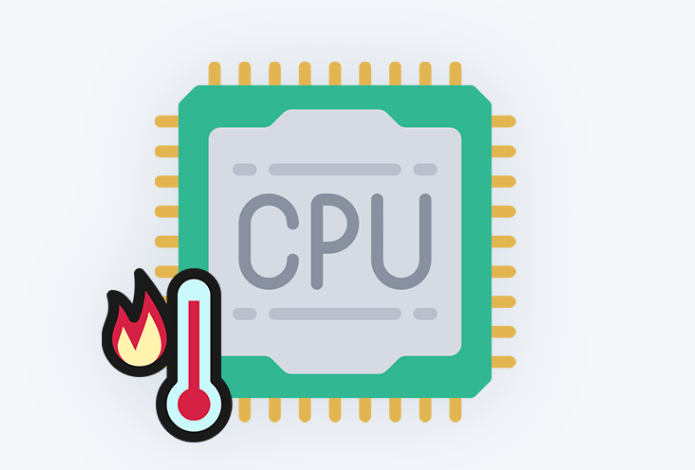What Is Average CPU Temp Best Information in 2024

Are you a tech enthusiast who loves tinkering with your computer Average CPU Temp? Or maybe you’re just curious about what goes on inside that little box that powers your digital world. Well, one important aspect of computer hardware that often gets overlooked is the Average CPU Temp. Yes, we’re diving into the fascinating realm of average CPU temps! Presently, don’t allow those three little letters to threaten you.
In this blog post, we’ll break it all down for you in easy-to-understand terms and reveal why monitoring and maintaining optimal Average CPU Temp are essential for top-notch performance. So grab your thermal paste and get ready to explore the captivating world of CPU temperature!
Factors Affecting Average CPU Temp
The temperature of your CPU can be influenced by various factors. One key factor is the workload you put on your computer. When you run demanding tasks such as gaming or video editing, your CPU works harder and generates more heat. Similarly, if you have multiple applications running simultaneously, it can increase the load on your CPU and raise its temperature.
Another factor that affects CPU temperature is the cooling system in your computer. If your cooling system is not efficient or clogged with dust and debris, it may struggle to dissipate heat effectively, leading to higher temperatures. The ambient temperature of the room where your computer is located also plays a role in determining CPU temperature. If the room is hot or poorly ventilated, it can impact the overall temperature inside the computer case.
Overclocking is another factor that can significantly affect CPU temperature. Overclocking alludes to speeding up your processor past its default settings. While this can boost performance, it also increases power consumption and generates more heat.
Inadequate thermal paste application between the Average CPU Temp and heat sink can lead to poor heat transfer and higher temperatures. Understanding these factors will help you identify potential issues with overheating and take appropriate measures to keep your CPU running at optimal temperatures for better performance.
Why Is Monitoring CPU Temperature Important?
Maintaining an optimal Average CPU Temp is crucial for the overall performance and longevity of your computer. When your CPU gets too hot, it can lead to system instability, crashes, and even permanent damage to the processor. One of the main reasons why monitoring CPU temperature is important is because high temperatures can affect your computer’s performance. When a CPU overheats, it starts throttling its speed in order to cool down. This can result in slower processing speeds and reduced overall efficiency.
In addition to affecting performance, excessive heat can also shorten the lifespan of your components. Over time, thermal stress caused by prolonged exposure to high temperatures can degrade the internal structures of your CPU and other hardware components. Moreover, monitoring your Average CPU Tempallows you to identify potential cooling issues before they become severe problems. By keeping a close eye on temperature readings, you can detect if there are any issues with airflow or cooling systems that need attention.
Regularly monitoring your CPU temperature plays a vital role in ensuring reliable performance and extending the lifespan of your computer system. It helps prevent unnecessary downtime and costly repairs by addressing heat-related issues proactively.
What Is Considered A Safe And Normal CPU Temperature Range?
When it comes to the temperature of your computer’s central processing unit (CPU), it’s important to know what is considered safe and normal. Operating within the appropriate temperature range not only ensures optimal performance but also prolongs the lifespan of your CPU. The safe and normal CPU temperature range can vary depending on factors such as the type of processor, cooling system, and workload intensity. Generally, most Average CPU Temp have a maximum operating temperature specified by the manufacturer. Staying below this limit is crucial to prevent overheating and potential damage.
For desktop CPUs, temperatures ranging from 40°C to 70°C are generally considered safe under typical usage conditions. However, during heavy workloads or overclocking, temperatures may rise higher but should still remain within acceptable limits. Laptop CPUs tend to run slightly hotter due to limited space for cooling mechanisms. As a result, temperatures up to 90°C can be considered normal during intense tasks. It’s essential to monitor these temperatures closely and ensure proper ventilation for laptops.
Remember that different software tools provide varying readings of CPU temperature; therefore, it’s advisable to use reliable monitoring programs specifically designed for accurate temperature measurements. By keeping an eye on your CPU temperature and staying within its safe range through effective cooling solutions like adequate airflow or liquid cooling systems, you can optimize performance while safeguarding your precious hardware investment!
How To Check Your CPU Temperature?
Checking your CPU temperature is a straightforward process that can help you monitor the health of your computer and ensure it’s running optimally. There are several methods you can use to check your CPU temperature, depending on your preference and the tools available.
One common method is through BIOS or UEFI settings. Restart your computer and enter the BIOS or UEFI menu by pressing a specific key during startup (usually displayed on the screen). Look for hardware monitoring options or system information, where you should find the CPU temperature listed.
Another option is using software applications specifically designed for monitoring system temperatures. These programs provide real-time data about various components of your computer, including the CPU temperature. Some popular software options include HWMonitor, Core Temp, and SpeedFan.
If you prefer a more hands-on approach, you can also physically check the cooling system of your computer. Ensure that all fans are functioning properly and not obstructed by dust or debris. Additionally, make sure that there is proper airflow around your computer to prevent overheating.
Regularly checking your CPU temperature allows you to identify any unusual spikes or patterns that may indicate cooling issues or potential hardware problems. By keeping an eye on this crucial metric, you can take proactive measures to maintain optimal performance and extend the lifespan of your valuable equipment.
Tips For Lowering Your CPU Temperature
Tips for Lowering Your CPU Temperature
1. Keep your computer clean and dust-free: Dust accumulation can hinder airflow and lead to higher CPU temperatures. Regularly clean the vents, fans, and heat sinks using compressed air or a soft brush.
2. Ensure proper ventilation: Make sure that your computer is placed in a well-ventilated area with enough space around it. Avoid blocking the vents with objects like books or papers, as this can restrict airflow.
3. Use high-quality thermal paste: Thermal paste helps transfer heat from the CPU to the cooler more efficiently. Applying a high-quality thermal paste between the CPU and heatsink can help lower temperatures.
4. Optimize power settings: Adjusting your power settings can lower your CPU’s temperature by reducing its performance when not needed. You can do this through the operating system’s power options or using third-party software.
5. Upgrade cooling solutions: If you’re experiencing consistently high temperatures, consider upgrading your cooling solution. This could involve installing additional case fans, upgrading to a better CPU cooler, or even liquid cooling if necessary.
6. Check for background processes: Some programs run in the background and consume significant resources, leading to higher temperatures. Close any unnecessary applications or use task manager to identify resource-intensive processes that you may need to terminate.
By following these tips and maintaining an optimal temperature range for your CPU, you can ensure that your computer operates smoothly without overheating issues affecting its performance and longevity
Conclusion
Maintaining an optimal CPU temperature is crucial for ensuring the best performance of your computer. By understanding what factors affect CPU temperature and how to monitor it, you can take proactive steps to prevent overheating and potential damage to your system. By regularly checking your CPU temperature, you can identify any abnormal spikes or fluctuations that may indicate a cooling issue. This allows you to take timely action such as cleaning dust from fans, reapplying thermal paste, or adjusting fan speeds to keep temperatures within safe limits.
Operating within the recommended safe range not only extends the lifespan of your processor but also improves overall system stability and reliability. It ensures that your computer performs optimally during resource-intensive tasks like gaming or video editing. Lowering your CPU temperature can be achieved through various methods such as improving airflow in your PC case, using high-quality cooling solutions like aftermarket coolers or liquid cooling systems, and even under clocking or under volting your processor if necessary.
Remember, a consistently high CPU temperature can cause permanent damage over time. So make it a priority to maintain proper cooling for your system by monitoring average CPU temp regularly.
Taking care of the average CPU temp is essential for anyone who wants their computer running smoothly while maximizing its performance capabilities. With proper monitoring and maintenance measures in place, you can ensure that both casual users and power users alike enjoy reliable computing experiences without the worry of overheating issues affecting their systems!




